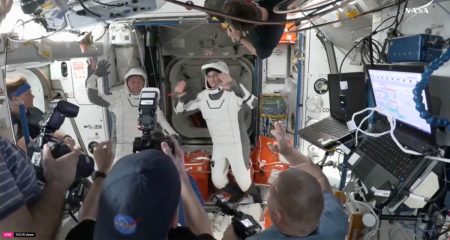
Weighing just 2,5kg, South Africa’s first privately owned nanosatellite, nSight1, has been successfully launched into orbit from the International Space Station (ISS).
Deployed on 24 May, nSight1 will orbit Earth and capture images with a remote sensing camera.
Locally designed and built by SCS Space, a member of the SCS Aerospace Group, nSight1 was constructed over a period of six months using all the available space infrastructure in South Africa.
It is the first time a private company in Africa has invested in building and launching a satellite.
“The satellite is an important milestone, demonstrating the outcome of the capability established through the department of science & technology’s ongoing investment in the South African space programme, said Mmboneni Muofhe, the department’s deputy director-general responsible for technology innovation.
“More than 70% of the satellite is made up of satellite components supplied by enterprises in the South African space industry.”
The department, which welcomed the deployment of nSight1, said South Africa has been involved in space research and technology for 50 years.
The first locally designed and manufactured satellite, Sunsat, was launched in 1999. NSight1’s deployment follows the successful launch of South African satellites since the late 1990s, including Sunsat (1999), SumbandilaSat (2009) and the Cape Peninsula University of Technology’s ZACube-1 satellite (2013).
nSight1 was part of a batch of 28 nanosatellites from 23 different countries, launched on 18 April 2017 from Cape Canaveral in Florida in the US.
After reaching the ISS, the nanosatellites were unloaded and deployed by the ISS team.
The main objectives of nSight1’s mission ares to demonstrate a patented coding technique developed at Nelson Mandela Metropolitan University and to showcase the space capabilities of private companies in South Africa.
nSight1 is part of the European Commission’s QB50 project, which is aimed at designing and deploying a network of satellites to study the largely unexplored lower thermosphere.
The SCS Aerospace Group’s nSight1 therefore carries the scientific instrumentation for in-site thermosphere analysis as one of its three payloads.
The Von Karman Institute for Fluid Dynamics in Belgium is the lead institute for the QB50 project consortium.
The second nSight1 payload is the newly developed SCS Gecko Imager. This is an ultra-compact imager that provides RGB imaging at high frame rates, large integrated high-speed data storage, and a compact form factor optimised for integration with two unit or larger CubeSat frames.
The satellite’s third payload is the Nelson Mandela Metropolitan University’s patented Radiation Mitigation VHDL Coding Technique.
The university has a strong partnership with SCS Aerospace Group in satellite technology.
The SCS Space ground operations team will be responsible for the mission control of the satellite.
This process involves the establishment of contact and a communication link with the nanosatellite from the new ground station situated near Houwteq in Grabouw.
Hendrik Burger, CEO for SCS Space, said the company was delighted to be part of an international project that has put South Africa on the international satellite map. — SANews




